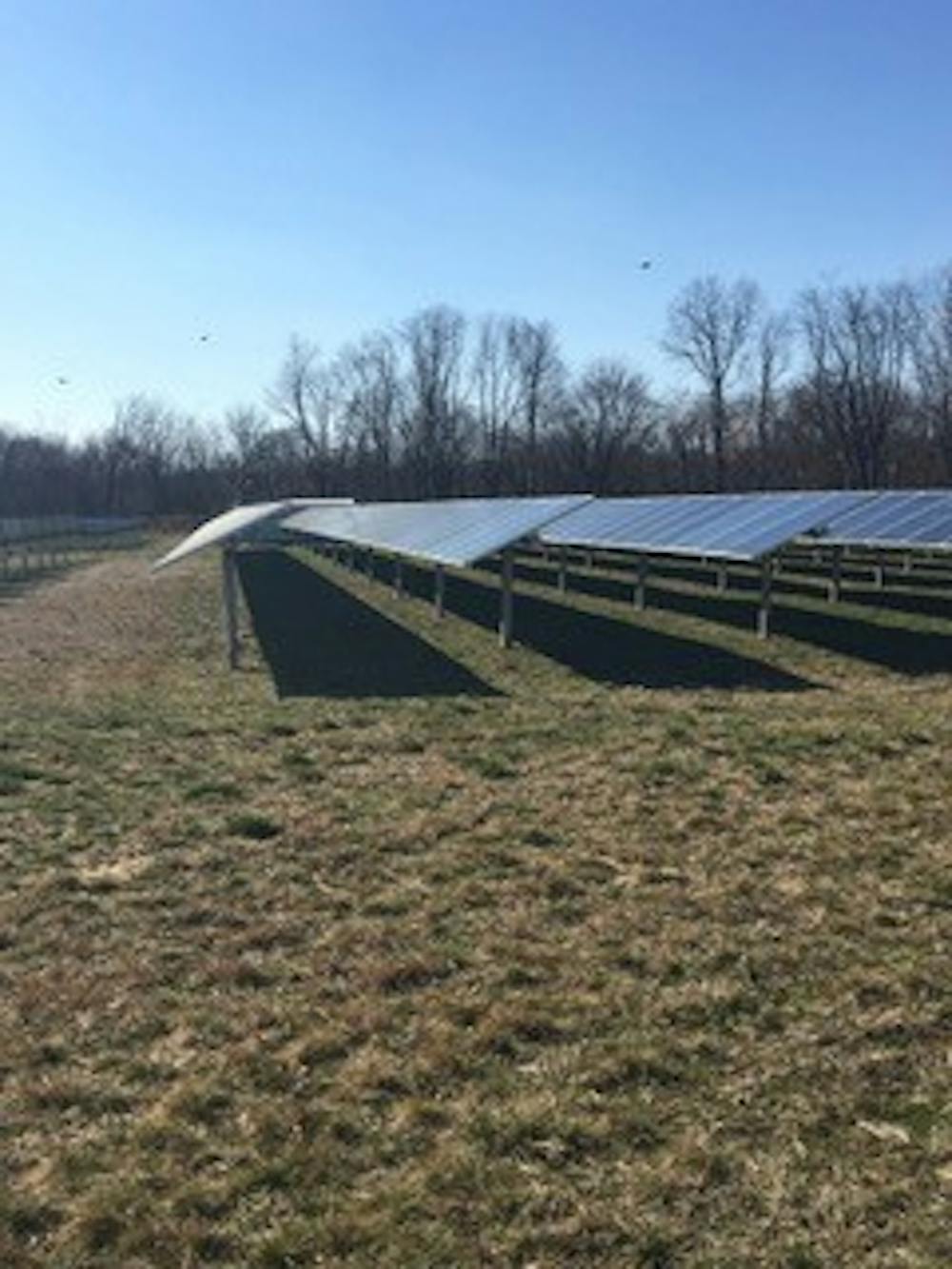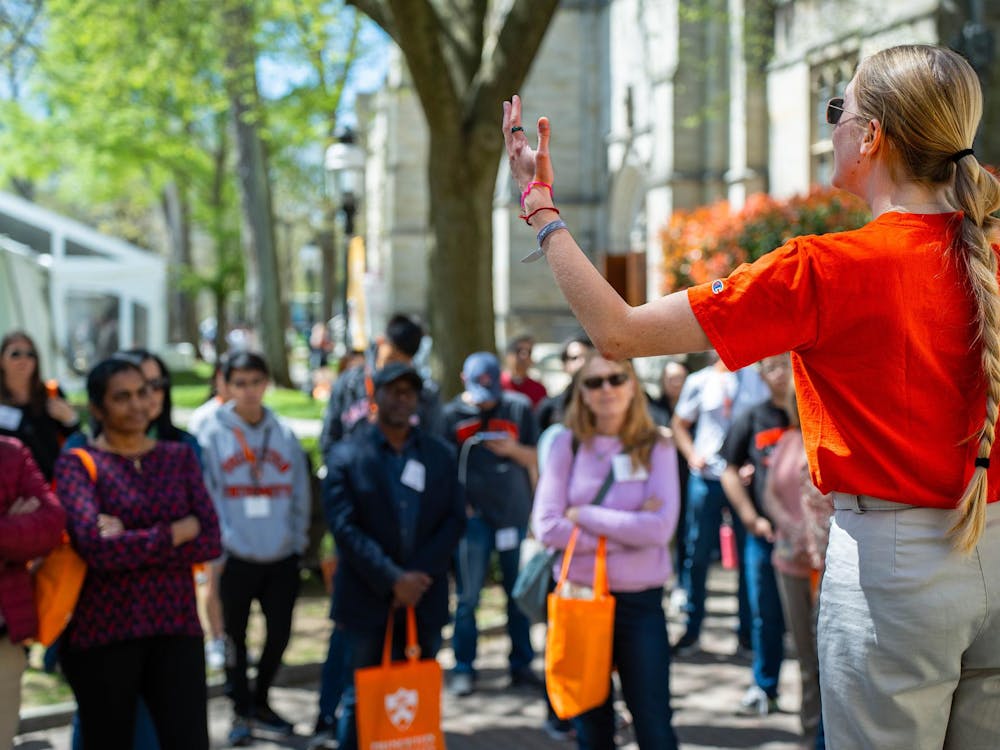“Colleges and universities across the country are situated to lead the charge to 100 percent renewable energy,” said Pleasant Garner ’18, on a recent tour of the University's solar panels.
The panels, situated across 27 acres in West Windsor Township, are home to one of the University's green energy initiatives. Seventy-five percent of the panels are tracking panels that will adjust to absorb as much sun as possible. The remaining 25 percent do not track sunlight and therefore face south in order to maximize absorption. Surrounded by a fence on all sides for protection, the grass in the fields is a special blend that won't grow taller than two feet in order to minimize energy used by mowing the grass.
Garner explained that the solar panel tour is part of an effort to promote the organization that she interns with, Environment America. She works with this organization as part of an effort to get more involved with environmental action on campus.
Environment America, an advocacy and research organization, promotes environmental issues and proposes potential solutions to these challenges. According to its website, the organization is currently working to prevent the rollback of former United States President Barack Obama’s Clean Water Rule, which is part of the 1972 Clean Water Act. The 2015 rule was part of the Environmental Protection Agency's attempt to correct and expand the reach of the Clean Water Act. President Donald Trump has since proposed repealing the rule for the sake of farmers, who are now strapped with navigating this new, more comprehensive regulation of land.
As for other sustainability efforts, Garner said there has been a push to change the way in which people live their lives, based on the examples set by other college campuses. She said colleges are well suited to lead the efforts for several reasons. For one, college campuses are significant energy consumers, and their campuses often possess physical attributes that make alternative energy sources such as solar panels more feasible. Moreover, colleges will benefit significantly by saving money and hedging against volatile fossil fuel costs, and they are positioned — as leaders in innovation — to create some of the best new energy solutions right on campus.
Director of the University Office of Sustainability Shana Weber, along for the tour, explained the University’s specific plans regarding sustainability. She said that the University is committed to sustainability and plans to continue this work.
In the early 2000s, legislators set a statewide goal in New Jersey to pull emission rates back down to 1990s levels by 2020. The University decided to mirror that goal and has been working towards it ever since, Weber said. Since this decision was made, the University has been developing and implementing a Strategic Plan, a 30-year framework for how to make the University sustainable and fulfill its commitment of being 100 percent carbon neutral over time.
“What we build today will still be the infrastructure 30 years from now,” Weber said.
Weber made it clear that this 30-year plan is crucial as it will bring the University to the mid-century, which is the current estimated tipping point for world ecosystem health. Weber also made it clear that it is important that people begin to switch their living habits and lifestyles so that come mid-century, we have done all that we can to avoid serious environmental issues.
It is clear that a key factor in enacting these changes is human behavior and psychology. As such, according to Weber, the University's Kahneman-Treisman Center for Behavioral Science & Public Policy works to understand the psychology behind decision-making within the field of sustainability to ensure that these new measures are accepted by the public.
Weber and Garner addressed the tour group when the group rode in Enterprise vans to the solar field, located across from the rugby fields on Washington Road. The solar panel field is responsible for approximately five percent of the University’s energy usage — that five percent is equivalent to the amount of energy used by Frick Chemistry Lab annually and is equivalent to roughly 700 homes' worth of energy, according to Gina Talt ’11, a Campus Lab Fellow.
Talt also told the group that the University’s solar panels have their peak energy production during the month of April, as humidity affects light absorption and April has the greatest trade-off ratio between humidity and available sunlight. Talt also mentioned that the solar panels the University uses can absorb all visible light, as well as some UV and infrared rays. The solar panels are expected to last 25 to 35 years.

Garner emphasized the need for Universities, in particular, to take the lead on sustainable energy.
“As centers of both academic research and civic engagement, universities must double-down on their efforts to counteract climate change,” Garner said. “Because schools such as Princeton have substantial financial resources at their disposal, it is our moral imperative to invest in the future of our planet.”









